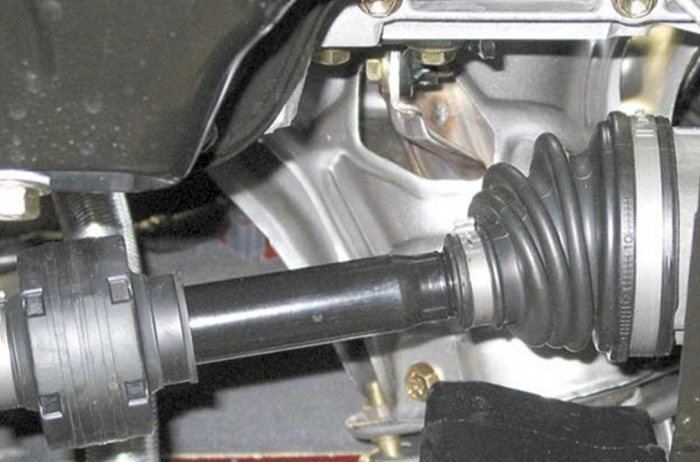by Joshua Thomas
A CV (Constant Velocity) joint is basically the connector or link between a car's transmission system and the wheel. It helps to transmit power to the wheels while allowing them to move up and down, and even turn left or right when steering the front wheels.
This articulated joint consists of an inner joint that is connected to the transaxle, an outer joint that connects to the wheel and an axle shaft in between. The inner and outer joints are lubricated using grease and covered by a flexible accordion boot to keep the grease in and dust out.
Contents

The price of a CV joint depends on the brand and most importantly, the car that it is designed for since it is not possible to get a universal fitting piece.
That said, you can get this part from as low as $60 to as high as $1,000 on Amazon while the labor cost for doing the replacement will set you back about $300 on average, depending on if you are doing a single or double axle change.
To give you an idea of these costings, this table lists the total average replacement cost of some popular car models for a single CV joint (data by Santander Consumer USA, 2019).
| Parts | Labor | Total | |
|---|---|---|---|
| Toyota Camry (Saloon) | $378 | $224 | $602 |
| Nissan Rogue (SUV) | $1166 | $349 | $1515 |
| Ford F-150 (Truck) | $685 | $260 | $945 |
| Dodge Grand Caravan (Minivan) | $297 | $80 | $377 |
Before doing a CV joint replacement, you must be sure that it is the part that is worn out. There are several symptoms that you can identify this issue with and these include:
The most common symptom of a damaged CV joint is a noisy clicking sound when making a gear shift as you take a hairpin turn.
You can test this by driving in reverse with the steering wheel turned all the way to one side. You will be going in circles and therefore, ensure your playground is wide and clear. If you hear the clicking sounds, a replacement is due.
In addition to making clicking noises when turning, a severely worn out CV joint will also make knocking sounds in normal driving conditions.
For front-wheel-drive cars, this noise will most likely come from the inner joint while for rear-wheel-drive vehicles, it can be from either joint.
If you spot grease on your car's tire, chances are that the boot is damaged and the lubricant is leaking out. The damage might be worse if you spot dark oil or dark-colored grease because this might leave the joint operating without any lubrication in no time.
A cracked boot also allows dirt and other fragments to get into the joint, thereby causing a lot of wear and tear. Therefore, if you spot such a leak, confirm the source of the grease and if it is the CV joint's boot, replace it as soon as possible.
Damaged CV joints won't be able to balance the rotational force properly and this will cause vibrations that will get more intense the more you accelerate.
In extreme situations, this might make it difficult to control the car at high speeds, creating a safety risk. It may also reduce the comfort of the ride and therefore, a replacement should be done immediately.
Lastly, you may experience some bounciness on your ride when driving on a flat surface. Though this may not necessarily be due to a damaged CV joint, you can take your car to a mechanic just to verify what the problem is.
 |
 |
 |
 |

About Joshua Thomas
Joshua Thomas just simply loves cars and willing to work on them whenever there's chance... sometimes for free.
He started CarCareTotal back in 2017 from the advices of total strangers who witnessed his amazing skills in car repairs here and there.
His goal with this creation is to help car owners better learn how to maintain and repair their cars; as such, the site would cover alot of areas: troubleshooting, product recommendations, tips & tricks.
Joshua received Bachelor of Science in Mechanical Engineering at San Diego State University.